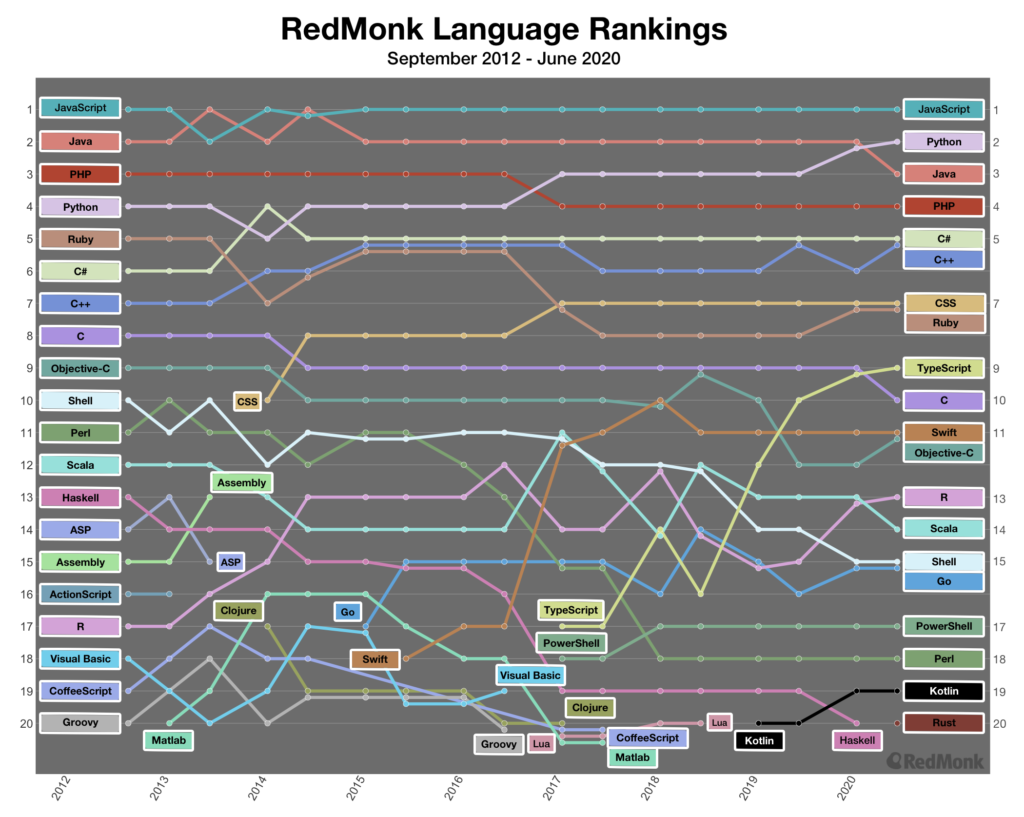If you’ve seen any of the programming-language rankings that analyst firms regularly publish, you know that the languages in those rankings’ upper tiers rarely change much in the short term. Python, JavaScript, Java, and other “big” languages are seemingly impossible to budge from the top spots.
That’s what makes analyst firm RedMonk’s long-term language breakdowns so interesting: You can see how usage of these languages rises or dips over a period of several years. RedMonk determines long-term rankings by sourcing data via GitHub pull requests and Stack Overflow discussion. “The idea is not to offer a statistically valid representation of current usage, but rather to correlate language discussion and usage in an effort to extract insights into potential future adoption trends,” is how the firm describes its methodology; GitHub is used to measure the amount of code generated via a particular language, while Stack Overflow is used to determine “chatter” or “buzz” around a language.
For the latest edition of the long-term chart, it’s interesting to see that Python is on the rise, as is CSS, Swift and TypeScript; C, Objective-C, and Scala are a bit down. Many languages, though, are pretty steady overall:

One interesting thing to note: After a roller-coaster ride over the past few years, R is actually four ranks above where it was in 2012. That runs counter to the popular narrative, which suggests that R, primarily used by data scientists and analysts as part of their workflow, is being eaten away by Python. Indeed, numerous surveys over the years have suggested that R use among data and analytics professionals has been falling at the expense of Python.
However, the RedMonk data suggests that R is more than holding its own as a niche language. That echoes the recent findings of the TIOBE Index, which saw R rise to eighth place from 20th in its language rankings.
Python is also on the rise, coming in second place on RedMonk’s rankings, no doubt thanks to its increasing use in everything from data analytics to A.I. work. “Underrated and often overlooked, the versatility of the language remains both its calling card and the basis for its continued strength,” reads RedMonk’s analysis. “Much like Perl in its heyday, Python is the glue for thousands of small projects and the basis for countless personal scripts, including a few that retrieve data for these rankings. But it continues to find its footing amongst emerging and expanding categories, whether that’s data science a few years ago or GPT-3 work today.”
But as you can see from the chart, “big” languages like Python generally haven’t moved very much in the rankings over the past several years; it’s in the lower rankings, where only a few thousand developers can have a sizable effect on a language’s overall usage, where you see quite a bit of turbulence. It’s anybody’s guess what this list might look like five years from now, but Python will probably still be there.


